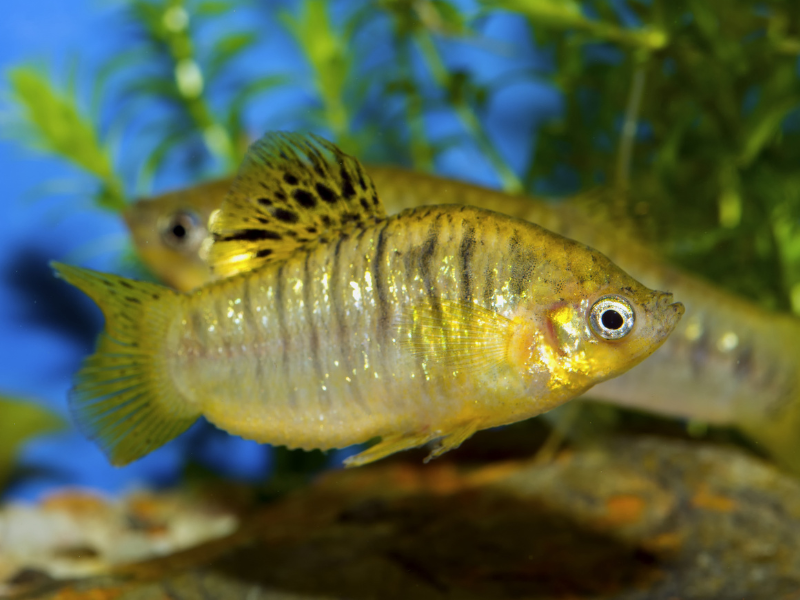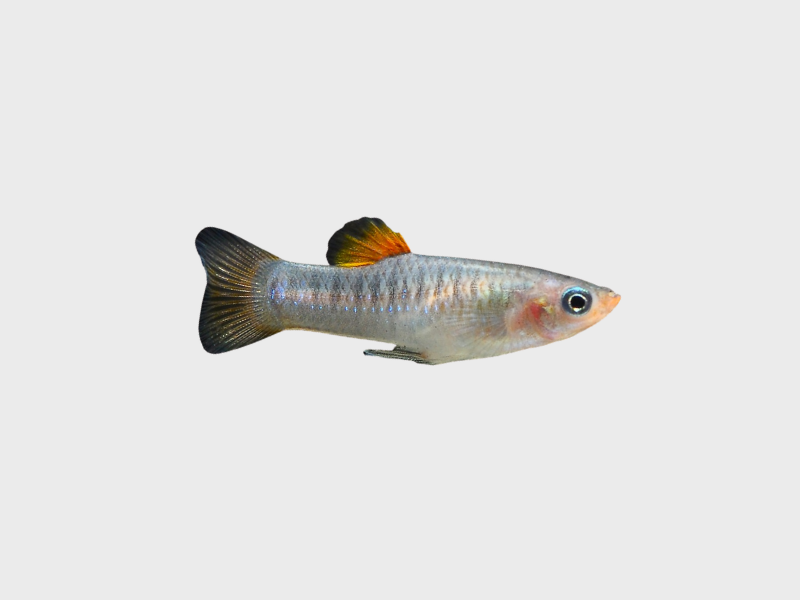Limia perugiae
Perugia's Limia

Scientific Classification
Quick Stats
Aquarium Building Information
About This Species
Basic Description
An energetic and hardy fish, the Perugia's Limia is an excellent choice for aquarists looking for a lively addition to their freshwater community tank. These fish are constantly on the move, exploring every level of the aquarium with great speed and curiosity. Due to their social nature, they thrive when kept in groups, which allows them to exhibit their most natural and engaging behaviors. Keeping them in a school helps them feel secure and reduces stress.
Caring for them is relatively straightforward, making them suitable for those new to the hobby. They are not picky eaters and will readily accept a varied diet of high-quality flakes, pellets, and prepared foods. As omnivores, they also appreciate occasional offerings of vegetable matter and will graze on algae and biofilm found in the tank. A well-maintained aquarium with clean, hard water and a gentle current is all they need to prosper. Their active lifestyle requires a tank with ample open space for swimming, but they also appreciate some planted areas where they can rest and feel secure.
Detailed Description
The Perugia's Limia, a member of the Poeciliidae family, is a dynamic and robust species originating from the Caribbean. Its natural habitats consist of freshwater streams and estuaries, which has led to its evolution as a fish that prefers hard, alkaline water and can tolerate low levels of salinity, making it quite adaptable in the home aquarium. Its fusiform, or torpedo-shaped, body is a clear indicator of its physiological adaptation for a life of constant, vigorous swimming. This active nature dictates their primary needs in captivity: a spacious environment with plenty of open water to accommodate their high energy levels.
When setting up an aquarium, it is crucial to replicate their natural conditions. The water should be kept warm and well-filtered, though water flow should remain gentle to avoid causing them stress. While they are resilient, stable water parameters are key to their long-term health. Socially, this species must be kept in a school. A group dynamic not only prevents stress but also allows their fascinating hierarchical behaviors to emerge. Without the company of their own kind, they can become shy or potentially boisterous with other tank mates.
As an omnivore with a healthy appetite, the Perugia's Limia is an opportunistic feeder. In the wild, their diet is varied, and this should be mirrored in the aquarium. A high-quality staple food should be supplemented with frozen or live foods to provide essential proteins. Importantly, they are avid consumers of plant matter, algae, and biofilm, which makes them a functional addition to the tank's ecosystem. Providing some vegetable-based foods will satisfy this natural grazing instinct and can help deter them from consuming delicate aquatic plants. Their medium metabolic rate results in a moderate amount of waste, so a consistent maintenance schedule with regular water changes is essential to keep the bioload in check and maintain pristine water quality.
Scientific Description
Limia perugiae is a species within the family Poeciliidae, a group distinguished by its ovoviviparous, or live-bearing, reproductive method. Native to the Caribbean, this species exhibits a notable tolerance for a range of salinities, classifying it as euryhaline, though it is predominantly found in freshwater environments. Its ecological success is partly due to its generalized, omnivorous diet. As a primary and secondary consumer, it feeds on a wide spectrum of sources, including algae, detritus, plant matter, and small invertebrates. A key ecological role it performs is that of a biofilm consumer, actively grazing on microbial communities that form on submerged surfaces, thereby contributing to nutrient cycling within its habitat.
Morphologically, L. perugiae possesses a fusiform body plan, which is hydrodynamically efficient for its characteristic fast and sustained swimming. This body shape, coupled with its high activity level, corresponds to a medium metabolic rate and oxygen consumption. In an artificial closed system like an aquarium, these physiological traits contribute a moderate bioload factor, necessitating adequate biological filtration. Its preference for warm, alkaline waters with a high mineral content and significant total dissolved solids is consistent with the geochemistry of its native range. Socially, it is a shoaling species, and group-living is integral to its behavior and well-being. Its conservation status is currently listed as Least Concern by the IUCN, indicating that it has a stable and widespread population in its natural environment and is not facing immediate threats of extinction.
Breeding Description
Breeding the Perugia's Limia is considered easy, as they are prolific livebearers that reproduce readily in a well-maintained home aquarium. To encourage successful and healthy breeding, it is recommended to maintain a group with more females than males. A ratio of one male to three or more females is ideal, as this distributes the male's persistent mating pursuits and prevents any single female from becoming overly stressed.
Sexual dimorphism is apparent, making it simple to distinguish between the sexes. Males are typically smaller and more slender than females. The most definitive trait is the male's modified anal fin, known as the gonopodium, which is a rod-like organ used for internal fertilization. Females, in contrast, are larger and have a more rounded body, especially when gravid (pregnant), and possess a standard, fan-shaped anal fin.
As livebearers, they do not lay eggs. After internal fertilization, the female carries the developing embryos for a gestation period of several weeks. She then gives birth to fully-formed, free-swimming young, known as fry. Adult Limia exhibit no parental care and will predate on their own young. To ensure a high survival rate, it is crucial to provide the fry with protection. This can be achieved by moving the gravid female to a separate, heavily planted birthing tank just before she is due to give birth, and removing her promptly afterward. Alternatively, in a single-tank setup, providing dense thickets of fine-leaved plants, such as mosses or floating plants, will offer the fry ample hiding places from hungry adults. The fry are large enough to immediately accept finely crushed flake food, powdered fry foods, and newly hatched brine shrimp. With adequate food and clean water, they will grow rapidly.
Generate Printable Card
Create a printable card for this creature to display in your store or aquarium. The card includes a QR code for quick access to more information.


